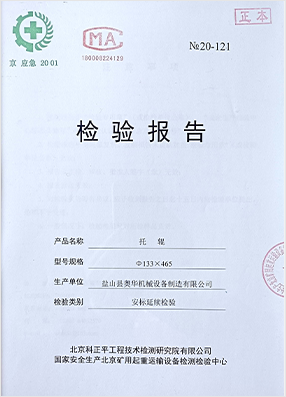 Afrikaans
Afrikaans  Albanian
Albanian  Amharic
Amharic  Arabic
Arabic  Armenian
Armenian  Azerbaijani
Azerbaijani  Basque
Basque  Belarusian
Belarusian  Bengali
Bengali  Bosnian
Bosnian  Bulgarian
Bulgarian  Catalan
Catalan  Cebuano
Cebuano  Corsican
Corsican  Croatian
Croatian  Czech
Czech  Danish
Danish  Dutch
Dutch  English
English  Esperanto
Esperanto  Estonian
Estonian  Finnish
Finnish  French
French  Frisian
Frisian  Galician
Galician  Georgian
Georgian  German
German  Greek
Greek  Gujarati
Gujarati  Haitian Creole
Haitian Creole  hausa
hausa  hawaiian
hawaiian  Hebrew
Hebrew  Hindi
Hindi  Miao
Miao  Hungarian
Hungarian  Icelandic
Icelandic  igbo
igbo  Indonesian
Indonesian  irish
irish  Italian
Italian  Japanese
Japanese  Javanese
Javanese  Kannada
Kannada  kazakh
kazakh  Khmer
Khmer  Rwandese
Rwandese  Korean
Korean  Kurdish
Kurdish  Kyrgyz
Kyrgyz  Lao
Lao  Latin
Latin  Latvian
Latvian  Lithuanian
Lithuanian  Luxembourgish
Luxembourgish  Macedonian
Macedonian  Malgashi
Malgashi  Malay
Malay  Malayalam
Malayalam  Maltese
Maltese  Maori
Maori  Marathi
Marathi  Mongolian
Mongolian  Myanmar
Myanmar  Nepali
Nepali  Norwegian
Norwegian  Norwegian
Norwegian  Occitan
Occitan  Pashto
Pashto  Persian
Persian  Polish
Polish  Portuguese
Portuguese  Punjabi
Punjabi  Romanian
Romanian  Russian
Russian  Samoan
Samoan  Scottish Gaelic
Scottish Gaelic  Serbian
Serbian  Sesotho
Sesotho  Shona
Shona  Sindhi
Sindhi  Sinhala
Sinhala  Slovak
Slovak  Slovenian
Slovenian  Somali
Somali  Spanish
Spanish  Sundanese
Sundanese  Swahili
Swahili  Swedish
Swedish  Tagalog
Tagalog  Tajik
Tajik  Tamil
Tamil  Tatar
Tatar  Telugu
Telugu  Thai
Thai  Turkish
Turkish  Turkmen
Turkmen  Ukrainian
Ukrainian  Urdu
Urdu  Uighur
Uighur  Uzbek
Uzbek  Vietnamese
Vietnamese  Welsh
Welsh  Bantu
Bantu  Yiddish
Yiddish  Yoruba
Yoruba  Zulu
Zulu Alternative Designs for Conveyor Trough Rollers in Material Handling Systems
Understanding Conveyor Trough Rollers Essential Components of Material Handling Systems
Conveyor systems are integral to various industries, providing an efficient means of transporting goods and materials. At the heart of many conveyor designs is the concept of trough rollers—essential components that play a crucial role in the functionality and efficiency of these systems. This article delves into the importance, types, and applications of conveyor trough rollers.
What Are Conveyor Trough Rollers?
Conveyor trough rollers are cylindrical components that support the conveyor belt as it moves materials from one point to another. Typically arranged in a trough shape, these rollers ensure that the belt maintains its shape and alignment while offering stability and reducing friction. By channeling the materials, trough rollers help prevent spillage, making them an essential factor in efficient material handling.
The Importance of Trough Rollers
Trough rollers serve several critical functions in conveyor systems
1. Load Distribution Trough rollers distribute the weight of the material across the length of the belt. This reduces localized stress, preventing premature wear and tear of both the belt and the rollers.
2. Stability The trough design helps keep materials on the belt. In environments where materials may slide or shift, these rollers provide a stable platform that minimizes the risk of spillage and operational interruptions.
3. Reduced Friction Trough rollers are engineered to minimize friction between the belt and the rollers. This reduction not only enhances the efficiency of the system but also saves energy, lowering operational costs in the long run.
4. Versatility They can be adapted for various applications, accommodating different belt widths and material types. This flexibility is essential for industries ranging from mining to food processing, where different materials are handled.
Types of Trough Rollers
There are various types of conveyor trough rollers, each designed for specific applications and conditions. The most common types include
conveyor trough rollers

1. Idler Rollers Idler rollers are crucial for supporting the conveyor belt without driving it. They are usually found in sets, with some positioned in a trough shape to aid in the material handling process.
2. Drive Rollers Unlike idler rollers, drive rollers are powered and provide the necessary motion to the conveyor system. They work in conjunction with idler rollers to ensure the belt moves smoothly.
3. Impact Rollers Designed to absorb the impact of heavy loads, impact rollers are essential in places where materials are loaded onto the belt. Their robust design helps mitigate damage to the conveyor system.
4. Return Rollers These rollers support the return side of the belt, ensuring that it moves back to the starting point without sagging or becoming misaligned.
Applications of Trough Rollers
Conveyor trough rollers are utilized across numerous industries, owing to their versatility and efficiency. Some common applications include
1. Mining In mining operations, trough rollers are essential for transporting extracted materials. Their robust construction withstands the abrasive conditions typical in such environments.
2. Agriculture In agricultural settings, trough rollers are used for the transportation of grains and fertilizers. Their capacity to handle bulk materials helps streamline operations.
3. Manufacturing In manufacturing plants, these rollers ensure smooth movement of products along assembly lines, contributing to efficient production workflows.
4. Food Processing Conveyor systems equipped with trough rollers are employed in the food industry for transporting ingredients. The design minimizes spillage and maintains hygiene during handling.
Conclusion
Conveyor trough rollers are foundational elements in the design and operation of conveyor systems. Their role in providing stability, reducing friction, and facilitating effective material handling is indispensable across various industries. As technology advances, the design and materials used for trough rollers continue to evolve, enhancing their performance and longevity. Understanding these components is vital for optimizing conveyor systems and ensuring smooth operational processes. When choosing trough rollers, it is crucial to consider the specific requirements of your application, including load types, environmental conditions, and maintenance needs, to ensure optimal performance and efficiency.
-
Trusted Conveyor Solutions from Leading Conveyor Idler Roller ManufacturersNewsJun.27,2025
-
Reliable Return Idler Solutions for Efficient Belt Conveyor SystemsNewsJun.27,2025
-
Precision Conveyor Accessories for Streamlined Material HandlingNewsJun.27,2025
-
High-Quality Belt Conveyor Idler Solutions for Efficient Material HandlingNewsJun.27,2025
-
High-Performance Belt Conveyor Pulleys for Reliable Material HandlingNewsJun.27,2025
-
Enhancing Material Handling EfficiencyNewsJun.27,2025





























